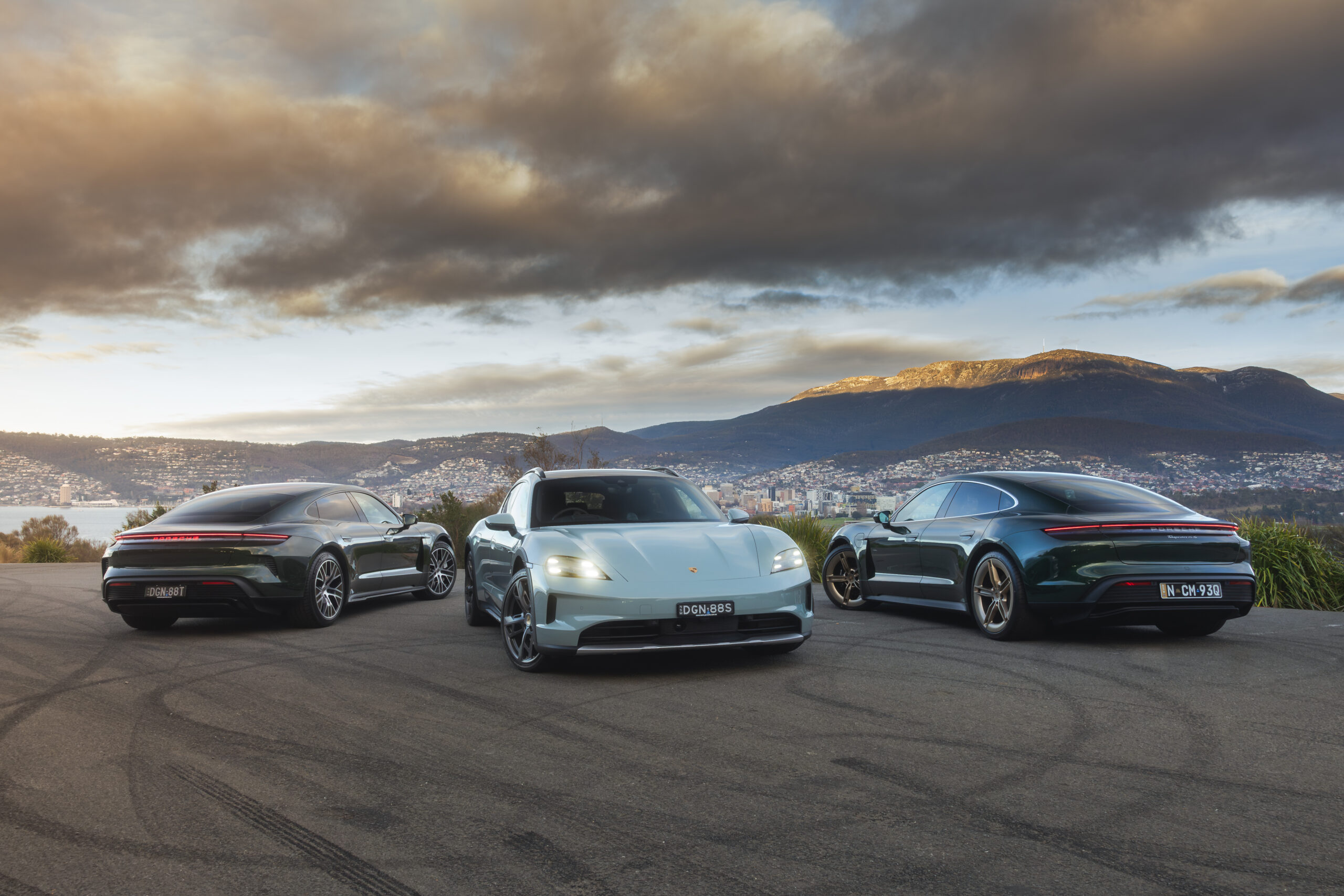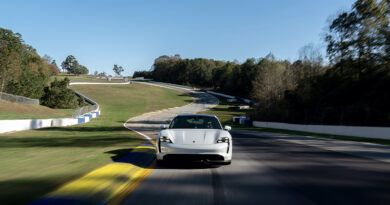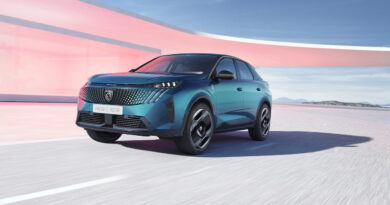2025 Hyundai Inster review: the $40k city SUV challenge to the MG4, GWM Ora and BYD Dolphin
It’s about bloody time.
Finally – belatedly – we have one of Australia’s top five car brands delivering a budget small EV.
Unsurprisingly it’s Hyundai, launching its Inster city crossover SUV into Aussie hands early in 2025 with a target price – Hyundai Australia says – around $40,000.
Hopefully they’ll squeeze it in for less to properly challenge the Chinese cheapies, who this year have been busy price war squabbling.
Buyers are benefiting as drive-away dollars plunge. As I write, the MG ZS EV is on the road for $34,990; GWM Ora at $35,990, BYD Dolphin about $39,000 and MG4 about $40,000.
READ MORE: 10 reasons why you should buy the Hyundai Inster, and 3 why you shouldn’t.
READ MORE: Drive-away deals: Chinese EVs slash prices as competition and rivals heat up
Most of the above have been doing solid sales numbers, but having my ear close to the Australian buying market, I’m told many potential EV buyers have not committed due to lack of brand awareness/trust, concern about Chinese reliability and resale, and there being no familiar showroom buying experience.
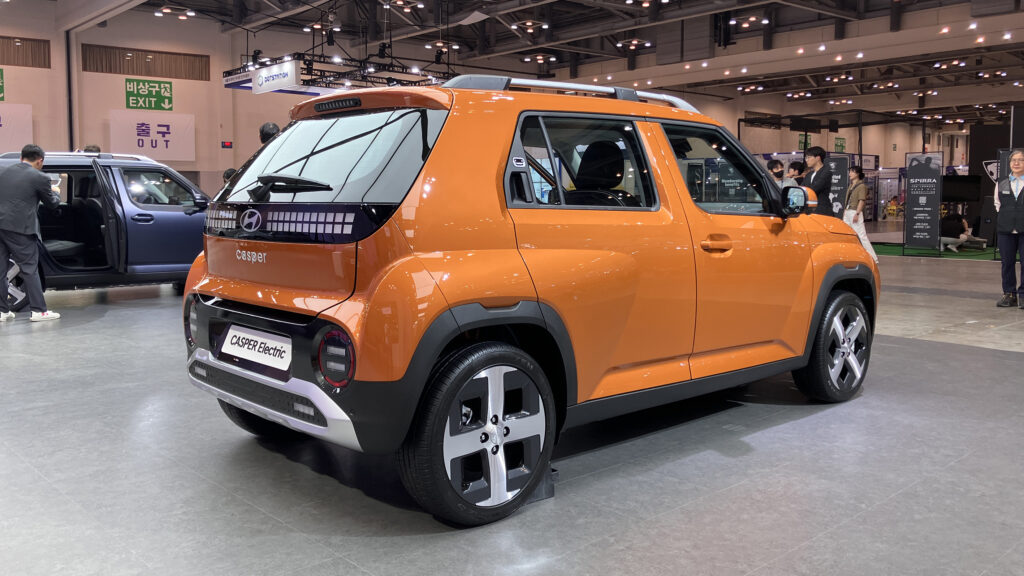
Here’s where Hyundai has an advantage. It’s a long-established brand with solid loyalty, and the Inster will nestle in beside familiar nameplates like i30, Kona, and Tucson.
So, to the Inster. We sampled pre-production versions in South Korea earlier this year, including a decent on-road test drive. Regrettably, we had to keep ugly camouflage on the car as it hadn’t yet been publicly revealed.
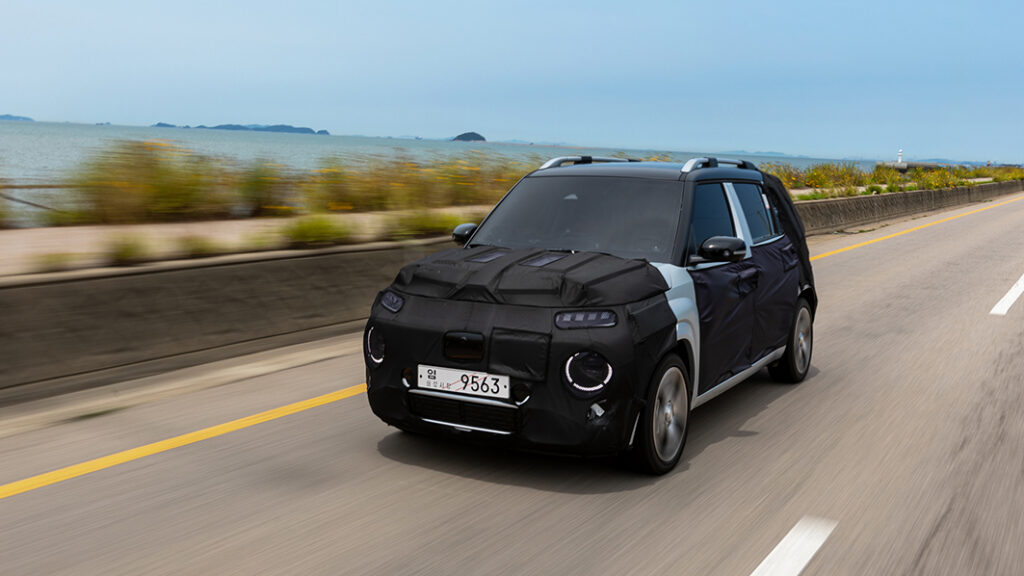
2025 Hyundai Inster: Price and equipment
It’s six months until the Inster lands, so frustratingly there’s no locked in price or full specification to help us compare the baby Hyundai EV to rivals.
From launch, we expect two grades – Standard Range and Extended Range. This mirrors Hyundai’s Kona EV, which eventually added an N-Line to the line-up. No confirmation, but an Inster N-Line would make solid sense in future.
What has been confirmed for Australia is an Inster Cross. We can imagine this’ll be a rugged styling exercise but little more. But if they want to jack one up, add knobbly tyres and make it AWD, bring it on.
The Standard Range uses a 42kWh battery, offers 71kW/147Nm, a 0-100km/h in tardy 11.7 seconds and WLTP range of 305km.
The Extended Range ups the battery to 49kWh, output to 85kW/147Nm, 0-100km/h down to 10.6 seconds and WLTP range up to 355km.
So far, so conservative.
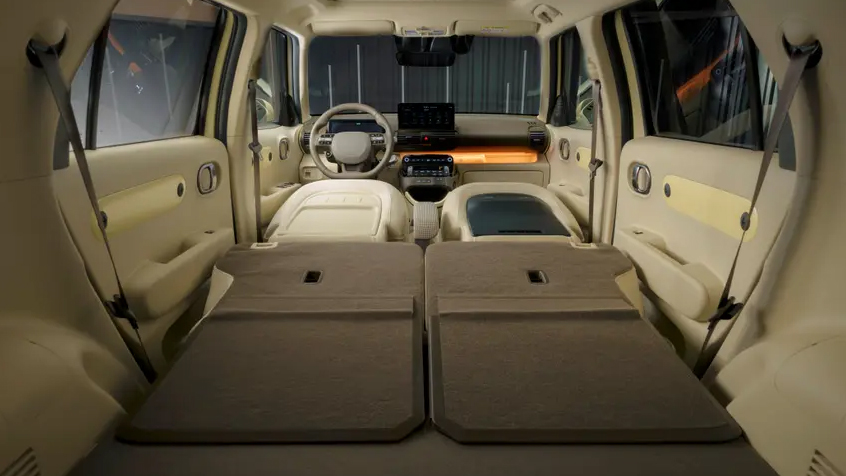
It public charges up to 120kW, the battery taking 30 minutes to go from 10-80 per cent. An 11kW on-board charger is standard for slower home AC charging of from four hours.
The Insters we tested were pleasingly high spec. They were well screwed-together cabins with smatterings of plushness to go with built-to-a-budget bits.
Features-wise, I’ll list the goodies promised for the Inster, but it’s unclear which equipment will go across both models, and which will be reserved for the flagship.
Outside are giant circular LED daytime running lights and Hyundai’s signature pixels for indicators and rear lights. The entry model had 15-inch wheels, but our test cars were on 17-inch rollers, which will reduce electric range, but their medieval-cross like style look good.
Inside we saw cloth and faux leather seat options, the latter likely only on the top grade.
Two 10.25-inch screens for driver display and infotainment should land on both grades, while there’s navigation, wireless phone charging, 64-colour ambient lighting, drive mode selector and heated front seats and steering wheel.

Likely reserved for the top grade are ventilated seats and a sunroof.
Safety’s excellent with radar cruise control, rear cross traffic collision avoidance, blind spot monitor, lane keep and surround-view monitor.
Massive bonus are external and internal power sockets (220V) for V2L, allowing bi-directional charging without requiring additional kit.
There’s a fun colour palette, likely at extra cost. Extroverts are Sienna Orange and Buttercream Yellow Pearl, while Tomboy Khaki, Bijarim Khaki Matte, Unbleached Ivory and Dusk Blue Matte should have wider appeal. It’s just not the sort of car to get in dull silver or black…

2025 Hyundai Inster: What we think
Utterly fit for purpose. That’s my takeaway.
The Inster’s an unashamed city car, and behaves like one. Hyundai’s not made it fast, nor stuffed a massive battery in to give it 500km+ range that its owners will never need. Good.
It’s reasonably softly sprung so proves altogether comfortable over imperfect roads, only occasionally let down by its skinny tyres over 17-inch rims. I’ve no doubt the 15-inch alloy-shod Insters ride better, but style-wise they’ll look comically under-wheeled.
Barely larger than a Fiat 500, it’s easy to park, turning circle’s tiny and it happily zipped through Korea’s congested streets.
Finding a decent corner in South Korea’s as hard as finding the AFL showing at a Seoul sports bar. But what mild cornering we could do showed the Inster not to be a wobbly thing, despite its very top-heavy, skinny body.
There’s decent steering feel and neat handling, and we may yet get Australia-specific tuning to tailor it even more for our market.
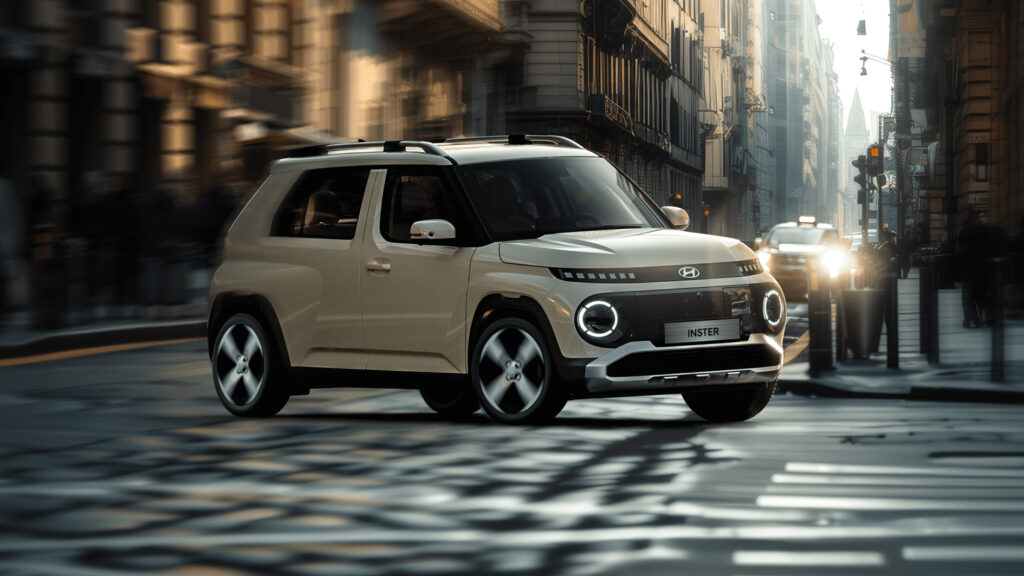
Hyundai Australia, to its credit, always does a superb job of ride/handling engineering, but it’d be a mistake to give the Inster a sporting bent. It’s just not what this city EV needs.
Not least because it struggles to get out of its own way. Like all EVs there’s instant response, but it’s still only 147Nm being delivered.
For comparison, the torquier MG4 and GWM Ora (250Nm each) and BYD Dolphin (180Nm) – hardly blow your skirt up acceleration-wise, so the Inster feels a bit underdone.
It’s zippy, quiet and great at city speeds, but performance falls off a cliff after that. But as previously stated, if feels fit for purpose.
On smooth highways the Inster’s surprisingly stable and quiet enough. Radar cruise control works superbly, but its lane keep and speed limit warning systems spoil the serenity.
Impressing me most was the Inster’s cabin. Outwardly this is a really small car, but it deserves Tardis comparison for interior roominess. Packaging is standout.

The high roof helps – head room is vast – but there’s also no elbow-banging your passenger, while no centre console means there’s walk-through space up front. Really rare stuff for a compact city car.
There’s no over-reliance on putting Every Damn Thing Through A Screen, as has become the way for EVs.
It’s reassuringly ‘Hyundai’ in here, with proper buttons for climate and media, and ample storage options for your phone, drinks and more.
Our range-topper’s faux leather seats were backside-pleasingly spongey, and it feels rather fancy with the heated/ventilated options, and your duo of giant panoramic screens. These factors give it an air of spoil-yourself quality.
We know Euro-market cars will be offered with brown and beige interior hues to go with black, so hopefully Australia will follow suit to ensure lively cabins.
Less great are eco interior bits. Recycled bottles and sugarcane tick sustainability boxes, but make the doors feel too thin and plasticky.
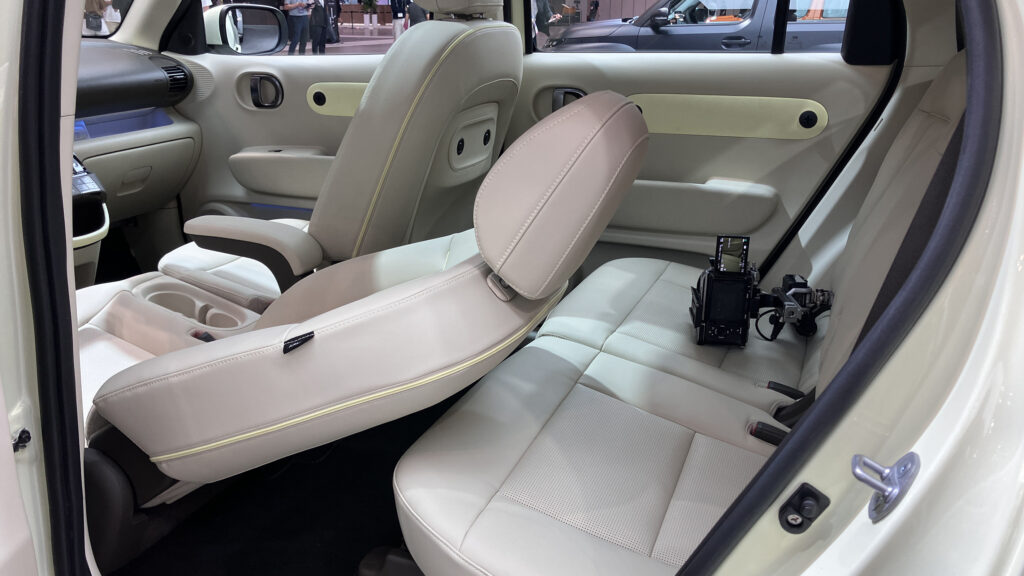
The Inster has only two rear seats, but like its low-ish range, this feels ideal for the target market. Young couples and retirees will be Inster shoppers, not large families.
The back chairs recline, slide and offer incredible leg room for an EV this size. Slide them all the way forward and there’s fair 351L cargo space, but with them back it’s just 280L, and most of that is in depth – it’s a very short boot.

Bloody brilliantly, all four seats fold down, the fronts just about flat. Why? I suppose a rear rider could go business class feet-up if they fancy, but more appealingly, you could squeeze some sort of mattress in, keep the climate on all night and you’ve got a hard-topped mini camper van to rival any two-man tent.
Design’s subjective, but the more I lived with the Inster, the more its looks grew on me. Okay, any car this tall and skinny will look gawky, but the lighting design, chunky arches and raised nose make it quite the charmer.
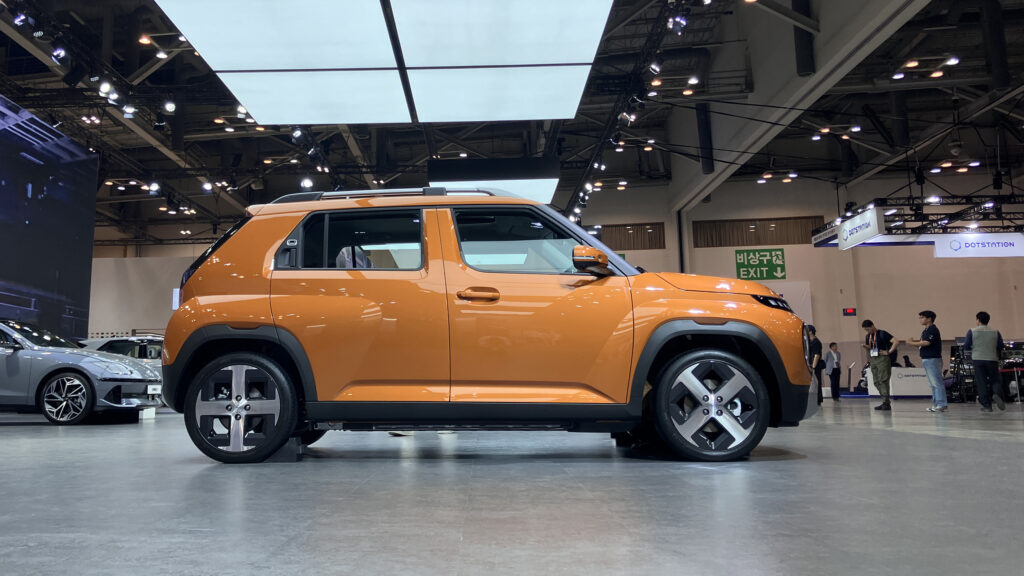
SCORE: 4/5
The Inster will live or die by its pricing, so the Chinese small car rivals’ current price war isn’t great news for Hyundai.
As a respected, longstanding brand it’ll be allowed some pricing grace, but a starting cost under $40k drive-away would give this new model the solid start it needs.
It deserves to do well. On first taste it’s a fantastic little city car with seriously clever interior space, the right features and solid safety.
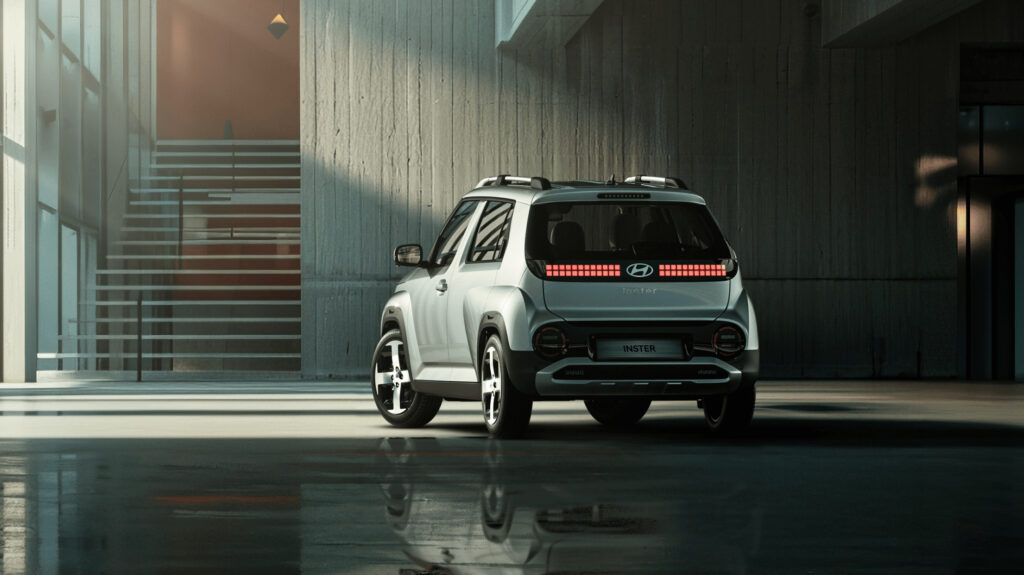
2025 Hyundai Inster specifications:
Price: TBC – Estimated $40,000 drive-away
Basics: EV, 4 seats, 5 doors, city crossover, FWD
Range: 305km / 355km (long range) WLTP
Battery capacity: 42kWh / 49kWh (long range)
Battery warranty: 8 years/160,000km
Energy consumption: 15.3kWh/100km (estimated)
Motor: 1 front-mounted permanent magnet synchronous, 71kW/147Nm or 85kW/147Nm (long range)
AC charging: 11kW, Type 2 plug
DC charging: 120kW, CCS combo plug
0-100km/h: 11.7 seconds / 10.6 seconds (long range)


